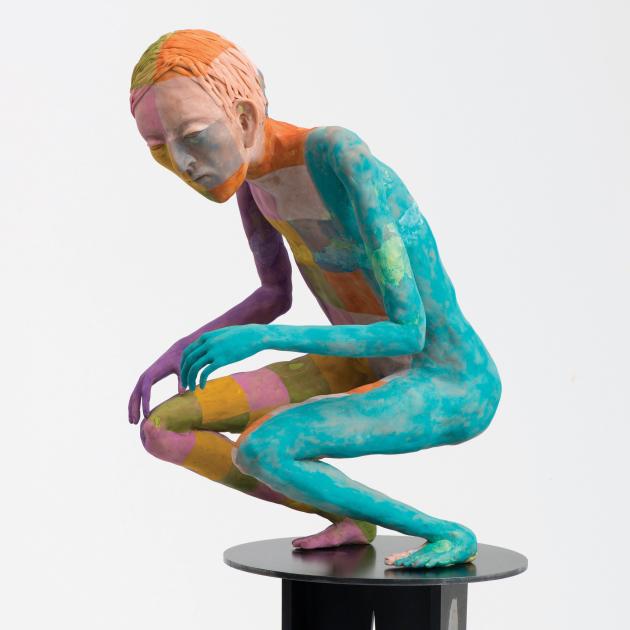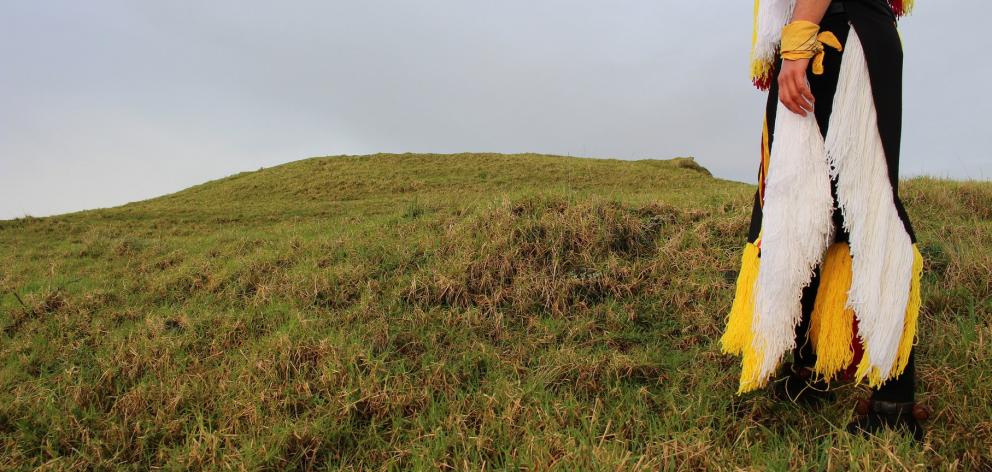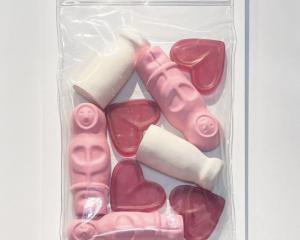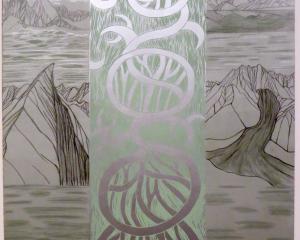In this week's Art Seen, Robyn Maree Pickens looks at exhibitions by Marie Strauss, Francis Upritchard, and a joint exhibition from Cora-Allan Wickliffe and Daniel Twiss.
 Fish Pot V, 2017, by Marie Strauss
''Nocturnal'', Marie Strauss (Mint Gallery)
Fish Pot V, 2017, by Marie Strauss
''Nocturnal'', Marie Strauss (Mint Gallery)

Do fish sleep? Are octopuses fish? Marie Strauss' exhibition Nocturnal, comprising drawings and ceramic works, had me asking such questions.
Of the many avian, mammalian and marine creatures that are nocturnal, Strauss has selected fish, octopuses and owls as her subjects. Incidentally, fish do sleep, and octopuses are molluscs not fish.
Whittling down the immense menagerie of nocturnal animals to fish, mollusc and bird has enabled Strauss to conduct in-depth studies of each creature. A study that is palpable in the tangle of octopus tentacles, and the many different iterations of the owl: as a drawing, a figurative ceramic sculpture in the likeness of an owl, an anthropomorphised owl-vessel, and a ceramic vessel adorned with flat, two-dimensional depictions of owl. In some instances the owl is identified by its species as an African Wood Owl, Weeping Owl, Barn Owl and Horned Owl.
The nocturnal theme has influenced the palette of blue greys, black, and flashes of ochre, reds, and choice of glaze. The matte exterior of the vessels is contrasted with gleaming interiors that seem to capture the essence of nocturnal creatures, even if that ''essence'' is our inability to apprehend their reversed inhabitation of the world.
Strauss' drawings and ceramics are less an attempt to pin down the nocturnal habits of fish, octopuses and birds, but rather to assist in the expansion of wonder for such creatures.
 Jockey, 2012, by Francis Upritchard
''Jealous Saboteurs'', Francis Upritchard (DPAG)
Jockey, 2012, by Francis Upritchard
''Jealous Saboteurs'', Francis Upritchard (DPAG)

It is difficult to do justice to the extensive exhibition Jealous Saboteurs, by Francis Upritchard, in this, the first major survey of her work.
Upritchard's practice can be described as an expanded mode of sculpture, which includes collaborations with specialist artisans to create sculptural figures, the frequent construction of elaborate mise-en-scene and the incorporation of found objects (subsequently adapted).
This sculptural practice is characterised by an ambivalent and allusive relationship to artefacts and the protocol of their display in art galleries and museums. That is, Upritchard is aware of the controversy that attends the display of
(non-Western) artefacts in (Western) museums, but sometimes it can be difficult to discern where critique ends and primitivism begins.
That said, there are many spectacular and enigmatic works in this comprehensive survey exhibition.
By way of introduction, there is a yellow figurine pulling taut the strings of an imaginary bow, an elongated sloth-like being stretching its long limbs, several cabinets of curiosities populated with esoteric collections of accoutrements, invented topographies housed in spectacle cases, and ceramic lampshades releasing light through sculpted-out eyes, a pair of purple and yellow striped feet to the right of the marble lampstand. For the most part none of the many eyes will look out at you. They are closed behind heavy or closed lids, yet nevertheless seem to welcome attention.
 Ihuma-tao, 2017, by Cora-Allan Wickliffe and Daniel Twiss
''Generation Housing NZ'', Cora-Allan Wickliffe and Daniel Twiss (Blue Oyster Art Project Space)
Ihuma-tao, 2017, by Cora-Allan Wickliffe and Daniel Twiss
''Generation Housing NZ'', Cora-Allan Wickliffe and Daniel Twiss (Blue Oyster Art Project Space)

''Generation Housing NZ'' is a collaborative exhibition by Cora-Allan Wickliffe (Ngapuhi, Tainui, Alofi and Liku) and Daniel Twiss (Lakota, Sioux, Rosebud Reservation) that brings together elements of the housing crisis.
It is inflected by the dispossession of indigenous peoples through colonisation. The exhibition pivots on the intersection of Wickliffe's once familial state house in Auckland, and the protests against the development of high density housing for the wealthy at Ihuma-tao, Mangere, Auckland. In the first instance, the state house has been sold to make way for private dwellings (three), and in the case of Ihuma-tao, the protests are ongoing.
Spatially, ''Generation Housing NZ'' moves from a personal or intimate story of dispossession (one family/whanau) in the main gallery, to the loss of a papakainga or group of families living on ancient ancestral lands (Ihuma-tao). An enlarged letter of effective eviction from Winz, the skeleton of a bracing wall with attached letterbox, a video of the specific house and three photographs of grass, piece together the story of New Zealand's housing crisis in which state houses are sold by the Government to property speculators.
A brown timber gate acts as a liminal threshold separating one family's loss and the potential destruction and dislocation of many at Ihuma-tao in the rear space. Here Twiss, a grass dancer, dances at Ihuma-tao as an act of resistance.
-By Robyn Maree Pickens







![Untitled (c. mid 1990s, [pink 3]), by Martin Thompson, 415mm×590mm. Photo: courtesy of Brett...](https://www.odt.co.nz/sites/default/files/styles/odt_landscape_small_related_stories/public/story/2024/02/untitled_pink_3.jpg?itok=Q0aQrc9o)




